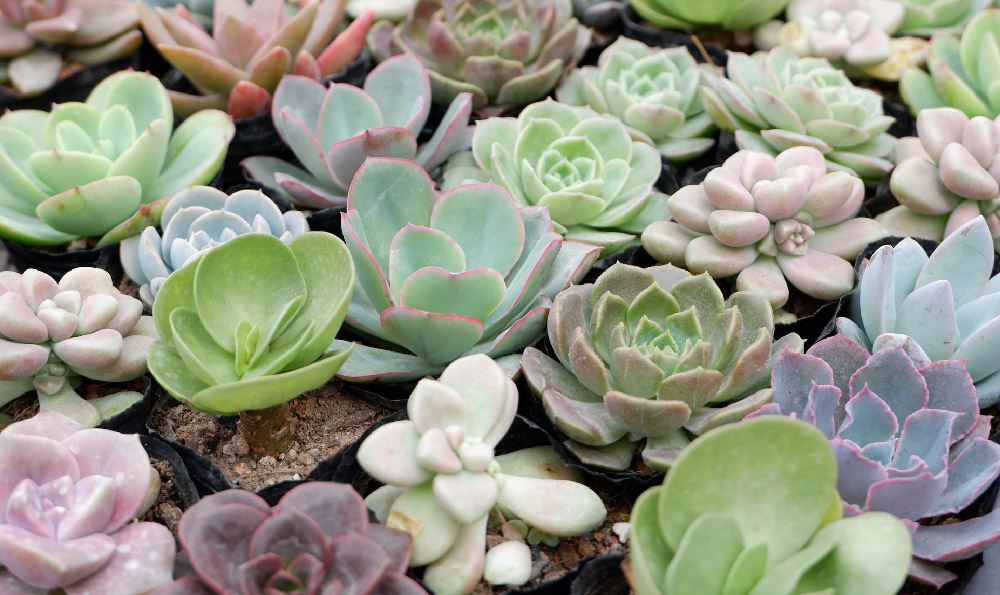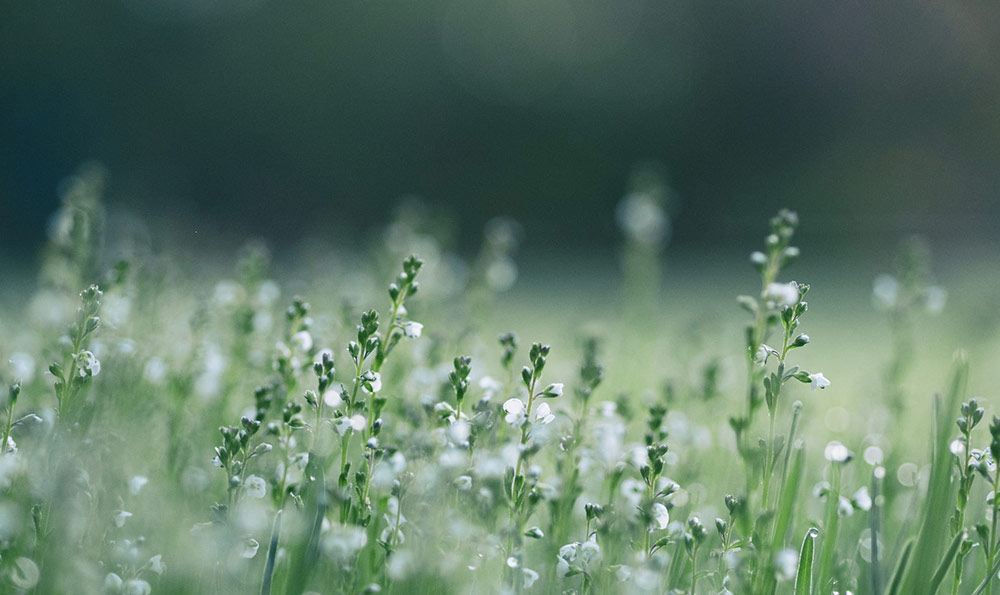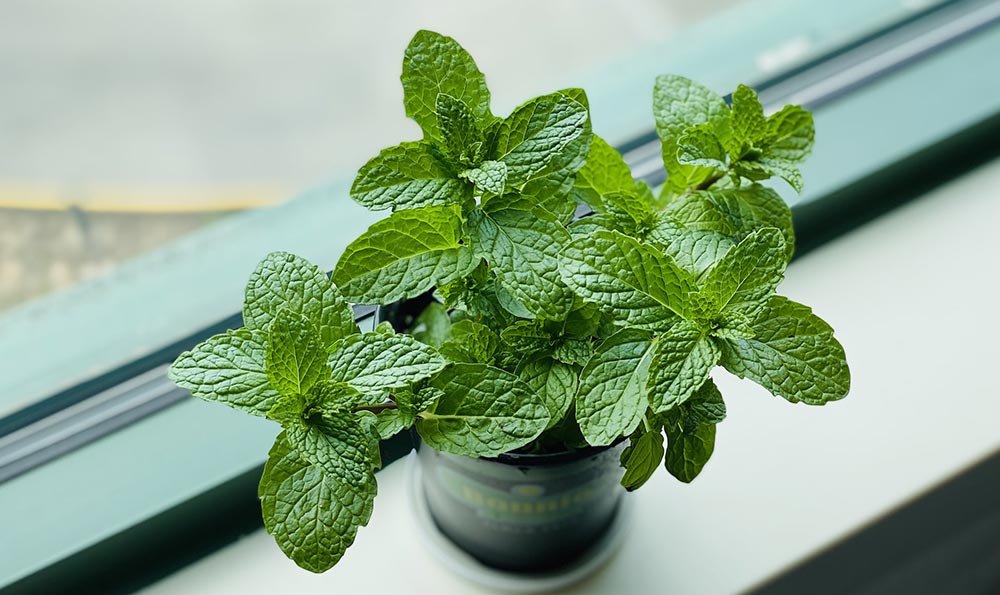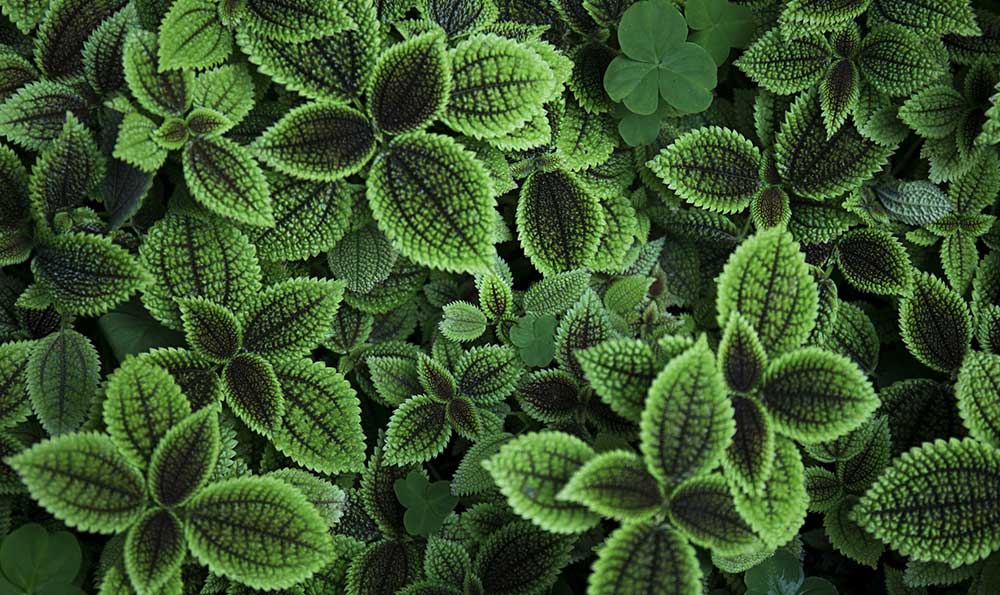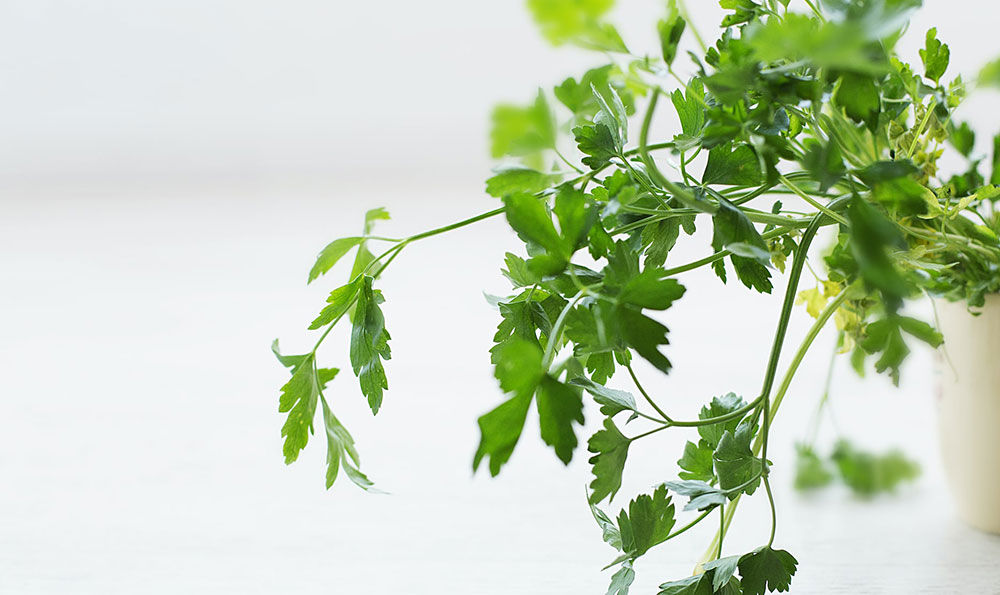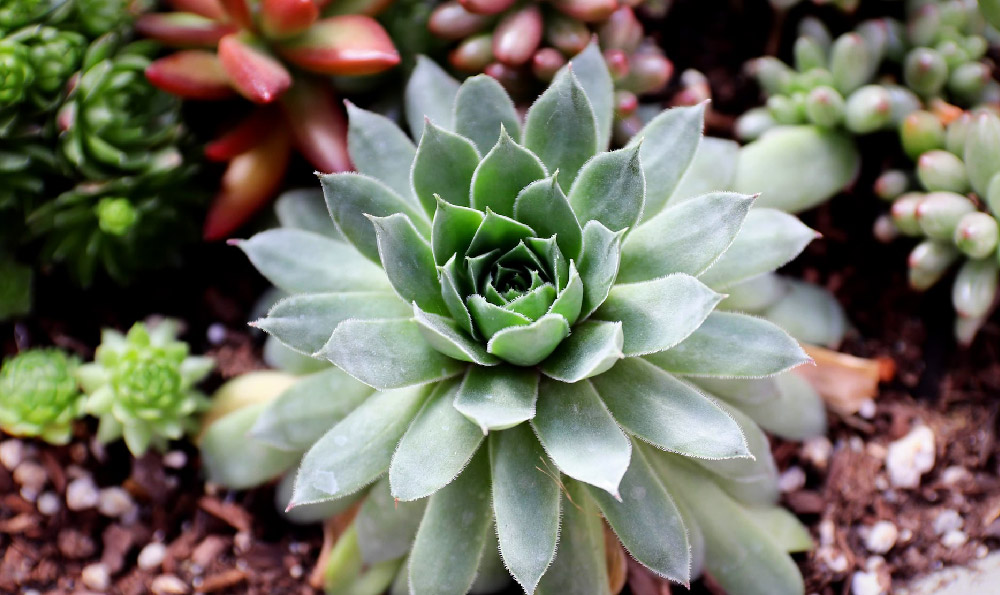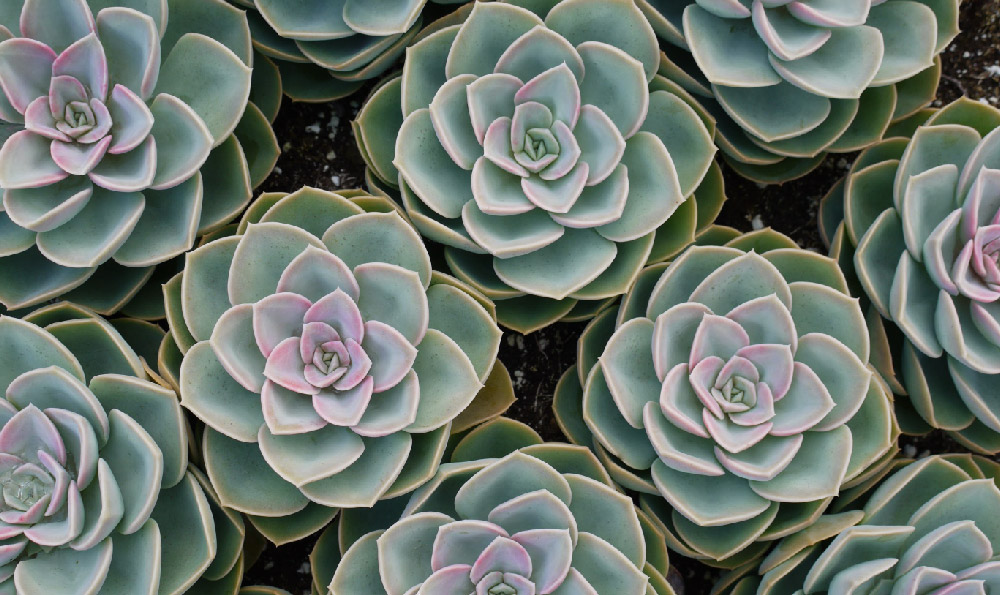多肉植物是一类特殊的植物,它们适应于干燥和少雨的环境,因此被广泛种植在干旱地区。多肉植物的生长季节是指它们在一年中生长和繁殖的特定时期。在这篇文章中,我们将详细探讨多肉植物的生长季节。

一、多肉植物的休眠期
多肉植物在自然界中通常有一个休眠期,也叫冬眠期。这个时期一般发生在冬天或者干旱季节,当环境温度较低或者降水量较少时,多肉植物会减缓生长速度,甚至停止生长。在这个时期,多肉植物的叶片会有所退缩,以减少水分蒸发,保护植物免受干旱的影响。
二、多肉植物的繁殖期
多肉植物的繁殖主要分为两种方式:有性繁殖和无性繁殖。有性繁殖是指通过花粉和卵子的结合,产生新的个体。多肉植物的花期通常发生在春季或夏季,这个时候植物会开花,吸引昆虫来传粉,从而完成繁殖过程。而无性繁殖则是通过植物的茎、叶或根部的分裂或萌发产生新的植株,这种方式可以在任何季节进行。
三、多肉植物的生长期
多肉植物的生长期主要发生在春季和夏季,这个时候植物会加速生长,增加叶片数量和体积。在生长期,多肉植物需要充足的阳光、适宜的温度和适量的水分来保持健康的生长。多肉植物还需要养分丰富的土壤和适量的施肥来提供生长所需的营养。
四、多肉植物的养护期
多肉植物的养护期是指植物在整个生长季节中所需要的养护和管理工作。在养护期,我们需要定期检查植物的健康状况,并根据需要提供水分和养分来满足植物的需求。多肉植物还需要定期修剪和除虫来保持植株的健康和美观。
五、多肉植物的适应性
多肉植物具有较强的适应性,可以在各种环境条件下生长,包括干燥地区、沙漠和高海拔地区。它们具有较强的耐旱性和耐寒性,能够在干旱和寒冷的条件下存活。多肉植物还能够适应不同的光照强度和土壤质地,因此在园艺中广泛应用。
六、多肉植物的市场前景
随着人们对多肉植物的喜爱和需求的增加,多肉植物的市场前景越来越广阔。多肉植物不仅具有观赏价值,还可以用于景观设计、盆栽和室内装饰。在全球范围内,多肉植物产业已经逐渐形成,并取得了可观的经济效益。
多肉植物的生长季节是一个复杂而又有趣的过程。了解多肉植物的生长季节对于正确养护和管理这些植物非常重要。希望通过这篇文章,读者能够对多肉植物的生长季节有更深入的了解。
多肉植物生长季节是几月
多肉植物是一类以肥厚的叶片储存水分,适应干旱环境的植物。它们通常在温暖和干燥的地区生长,因此对于多肉植物而言,生长季节与气候条件密切相关。

多肉植物的生长季节通常在春季和夏季,当气温开始升高并且阳光充足时。这是因为多肉植物需要充足的阳光来进行光合作用,并利用这些能量来储存水分。在温暖的季节,土壤也更容易干燥,有利于多肉植物的生长。
在春季,很多多肉植物会进入生长期。它们的叶片逐渐展开,茎干也开始变得粗壮。此时,多肉植物需要更多的光照和较高的温度来促进生长。一些常见的多肉植物,如仙人掌和龟背竹,在春季会有新的生长点出现,为新的叶片和茎干提供了更多的空间。
夏季是多肉植物生长的黄金季节。温暖的气候和充足的阳光使多肉植物能够快速生长。在这个季节,多肉植物的叶片和茎干会变得更加饱满,并且生长速度也会加快。一些多肉植物,如多肉小葱和多肉月光,会在夏季开花,展示出美丽的花朵。
多肉植物的生长季节也受到当地气候条件的影响。在一些干燥和炎热的地区,多肉植物可能会在秋季和冬季进入休眠期,以适应较低的气温和较少的降水。在这个时候,多肉植物会减少水分的消耗,并且生长速度也会减慢。
多肉植物的生长季节并非固定不变,而是受到气候条件的影响。虽然春季和夏季是多肉植物生长的主要季节,但在不同的地区和气候条件下,多肉植物的生长季节可能会有所不同。
多肉植物的生长季节通常在春季和夏季,当气温升高并且阳光充足时。在不同的地区和气候条件下,多肉植物的生长季节可能会有所差异。了解多肉植物的生长季节对于正确照顾和养护它们非常重要,可以帮助它们更好地生长和发展。
多肉植物的生长过程观察日记
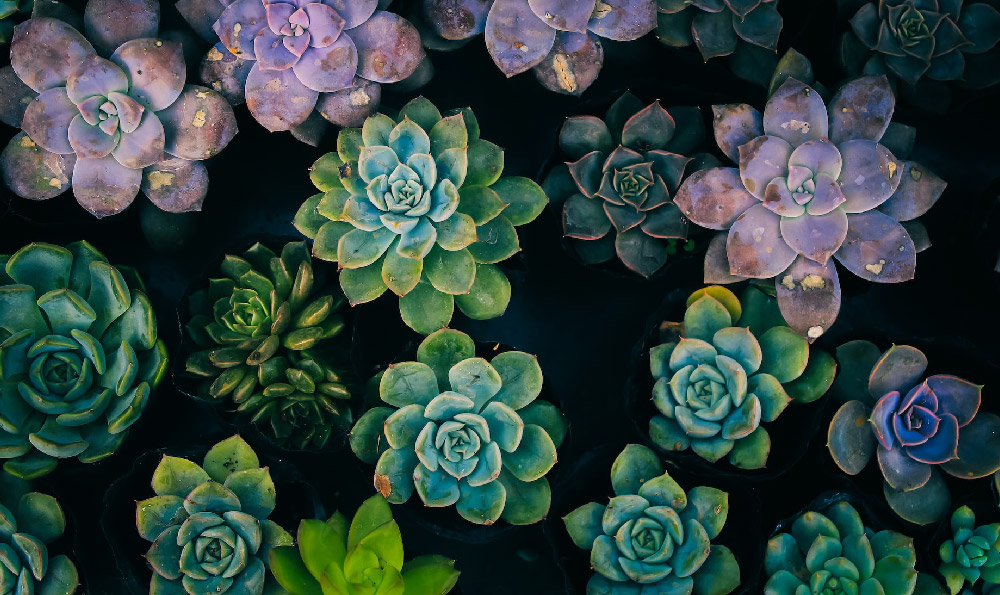
多肉植物是近年来备受关注的一类植物,其独特的外观和简单的养护方式吸引了无数植物爱好者的关注。很少有人真正深入了解多肉植物的生长过程。本文将通过观察多肉植物的生长过程,为读者展示多肉植物的成长与变化。
内容结构:
1. 多肉植物的背景和特点
2. 种子发芽和幼苗期观察
3. 生长期观察——叶片扩张和根系发展
4. 繁殖过程——叶插和分蘖观察
5. 总结与展望
多肉植物是一类蓄水能力强的植物,通常具有厚实肉质的叶片和浅表根系。由于其特殊的生理结构和适应环境的能力,多肉植物常常能在严酷的环境条件下存活和繁殖。了解多肉植物的生长过程对于合理养护和繁殖至关重要。
种子发芽和幼苗期是多肉植物生长过程中的关键阶段。通过观察多肉植物种子的发芽和幼苗的成长,我们可以了解到多肉植物生长速度和营养需求的变化。在观察的过程中,我们发现多肉植物种子的发芽率高,且幼苗生长迅速。幼苗的叶片呈淡绿色,并且具有明显的叶脉和紧密的排列方式。
进入生长期后,多肉植物的叶片会迅速扩张,同时根系也开始发展。观察中发现,多肉植物的叶片会逐渐变得厚实且多汁,并且颜色变得更加鲜艳。根系也会逐渐延伸并分叉,以吸收更多的水分和养分。这一阶段的观察结果表明,多肉植物在适当的光照和水分条件下可以迅速生长并展示出美丽的外观。
除了生长期的观察外,繁殖也是多肉植物的重要过程。根据观察,我们可以观察到叶插和分蘖两种常见的繁殖方式。叶插能够通过叶片的扦插实现新植物的生长,而分蘖则是指多肉植物通过侧芽的发生和分化来进行繁殖。观察结果显示,叶插和分蘖都是有效的繁殖方式,并且能够迅速生长出新的多肉植物。
通过对多肉植物生长过程的观察,我们不仅可以了解多肉植物的生理特点和生长规律,还可以得出一些有价值的结论。合理的光照和水分是多肉植物健康生长的关键。适当的繁殖方式可以扩大多肉植物的数量和种类。多肉植物的观赏价值和经济价值也日益受到重视,为多肉植物的研究和产业发展提供了广阔的空间。
通过对多肉植物生长过程的观察,我们可以深入了解多肉植物的成长与变化。多肉植物的生长过程是一个充满奇妙和有趣的过程,同时也给我们带来了美的享受和实用的价值。希望通过本文的介绍,读者能够更加了解和关注多肉植物,同时也对多肉植物的研究和应用产生更大的兴趣和热情。
1. Introduction
A. The topic and purpose of the article
- Did you know that succulent plants are not only beautiful but also fascinating in their growth process? In this article, we will observe the growth process of succulent plants and explore the various stages of their development.
- Succulent plants have gained immense popularity in recent years due to their unique appearance and low-maintenance nature. However, there is limited information available on their growth process. In this article, we will delve into the growth stages of succulent plants and document our observations in a growth diary.
2. Content and Structure
A. Overview of the article's structure
- In this article, we will explore the growth process of succulent plants through the following stages
1. Germination and Seedling Stage
2. Growth Stage - Leaf Expansion and Root Development
3. Reproduction Process - Leaf Propagation and Offshoot Observation
- Through this structured approach, we aim to provide a comprehensive understanding of the growth journey of succulent plants.
3. Germination and Seedling Stage
A. Observation of seed germination and seedling growth
- Succulent plant seeds exhibit high germination rates and rapid seedling growth.
- Seedlings have light green leaves with distinct veins and a compact arrangement.
4. Growth Stage - Leaf Expansion and Root Development
A. Observation of leaf expansion and root development
- Succulent plant leaves gradually become thicker, juicier, and display vibrant colors.
- Root systems start to extend and branch out to absorb more water and nutrients.
5. Reproduction Process - Leaf Propagation and Offshoot Observation
A. Observation of leaf propagation and offshoot formation
- Leaf propagation and offshoot formation are two common methods of succulent plant reproduction.
- Both methods have proven to be effective in producing new succulent plants.
6. Conclusion and Future Outlook
A. Summary of main points and conclusions
- Adequate light exposure and water are crucial for the healthy growth of succulent plants.
- Proper propagation techniques can enhance the quantity and diversity of succulent plants.
- The ornamental and economic value of succulent plants is gaining recognition, offering vast opportunities for research and industry development.
- Observing and documenting the growth process of succulent plants not only provides valuable insights but also enhances our appreciation and enjoyment of these remarkable plants.
7. Establishing Rapport and Consensus
A. Use of rhetorical questions to engage readers
- Have you ever wondered how succulent plants grow from tiny seeds into beautiful, thriving plants?
- What if I told you that understanding the growth process of succulent plants can unlock their full potential?
8. Demonstrating Wisdom and Authority
A. Use of inquiries to analyze the growth process
- What factors contribute to the rapid growth and vibrant colors of succulent plant leaves?
- How does the development of root systems in succulent plants impact their overall growth?
9. Displaying Personality and Charm
A. Use of emphasis to express unique viewpoints
- The mesmerizing growth journey of succulent plants reveals their resilience and adaptability.
- Witnessing the transformation of succulent plants through each stage of growth is truly a remarkable experience.
10. Ensuring Rationality and Fairness
A. Synonymous phrases and alternative expressions for transitional words
- Firstly, secondly, thirdly, furthermore, finally, in conclusion → To begin with, next, moreover, additionally, lastly, in summary
In conclusion, this article offers a detailed observation diary of the growth process of succulent plants, highlighting their unique characteristics and stages of development. By understanding the growth process, readers can appreciate the beauty and value of succulent plants while gaining practical knowledge for their care and propagation. With a word count of 800 to 2000 words, this article aims to engage readers and leave a lasting impression about the wonders of succulent plants.


